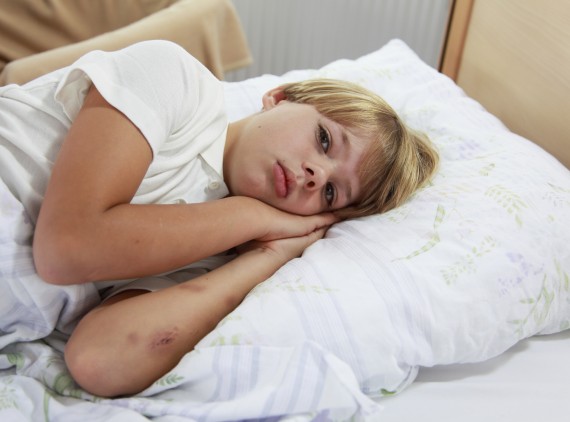Has your child been getting a lot of nosebleeds lately? Have you been noticing strange bruises? Most of the time, these symptoms are harmless, but for some kids, they could be due to a low platelet count.
Immune thrombocytopenic purpura, commonly called ITP, is a blood disorder that can cause excessive bruising and bleeding. It occurs when you don’t have enough platelets, which are the cells that help your blood to clot. ITP is a rare condition, only about 10 out of 100,000 people are diagnosed with it.
There are two forms of ITP:
- Acute thrombocytopenic purpura. While acute ITP can occur at any age, it most commonly affects young children, ages 2 to 6 years old. Symptoms present suddenly, often following a viral illness or immunization, and typically disappear in less than a year. Most of the time, no medical treatment is needed.
- Chronic thrombocytopenic purpura. Chronic ITP can occur at any age, and the symptoms usually last more than a year. It is more common in older children and adults and those who develop ITP without a preceding viral infection or immunization. Sometimes medical treatment is needed for chronic ITP.
Children with either acute or chronic ITP should be supervised by a blood specialist, called a hematologist.
The specialists at the Phoenix Children’s Hemophilia & Thrombosis Program are experts in treating ITP.
What causes ITP? Why does my child suddenly have a low platelet count?
We know that a low platelet count is what causes ITP, but what causes a person to suddenly not have enough platelets? Sometimes when the immune system gets triggered, the body gets confused and responds in an inappropriate way. This is what happens with ITP — your immune system develops an antibody that attacks and destroys your own body’s platelets by mistake. So, while you are producing platelets normally, your immune system is destroying them at the same time.
The cause of ITP often goes unknown, but the following are common triggers:
- Infections, typically viruses
- Medications or immunizations
- Other autoimmune disorders, such as rheumatoid arthritis or lupus
- Low-grade lymphomas or leukemias (produce abnormal antibodies that attack platelet proteins)
What are the symptoms of ITP?
Not everyone with ITP shows symptoms. However, if you notice any of the following in your child — especially after they’ve had a virus or immunization — you should speak with their doctor.
- Fatigue
- Bruising
- Bleeding of the gums
- Mucosal bleeding, such as nose bleeds
- Increased or excessive menstrual bleeding
- Blood in the urine or stool (only in severe cases)
- Petechiae (tiny red, brown or purple spots that look like a cluster of bruises or a rash)
How do I know if my child has ITP?
ITP is typically a diagnosis of exclusion, which means ruling out other possible conditions first. It can be difficult to diagnose because children do not always exhibit symptoms, and even when they do the symptoms often mirror those of other conditions.
The most common way ITP is discovered and diagnosed is through a blood test called a complete blood count (CBC). A healthy platelet count for children ranges between 140,000 to 450,000. A child with ITP will generally have less than 100,000, and by the time they experience symptoms, their platelet count may be as low as or lower than 10,000.
Will my child have ITP for the rest of their life, or can it be treated?
Not everyone diagnosed with ITP requires treatment; in fact, the body usually corrects the disorder on its own. Typically, the only course of action needed is to monitor platelet counts and to take preventative measures to avoid serious bleeding complications.
Children with ITP may need to:
- Take special precautions to prepare for possible increased bleeding during medical procedures
- Limit physical activity that can potentially lead to head injury
- Avoid high-impact sports and activities that may cause injury or excessive bruising
If bleeding issues become a concern, medical treatment may be necessary.
- Oral steroids to increase platelet counts are the most common treatment for ITP.
- Intravenous immunoglobulin (IVGG) is sometimes used to slow down the destruction of platelets.
- When needed, other medications can be used to modify the immune system or help increase platelet production.
- In the most severe cases, surgically removing the spleen may be necessary.
Things to remember if your child is diagnosed with ITP
If your child has ITP, you’re probably worried and may even be wondering if there was something you could’ve done to prevent it. ITP is not a preventable condition; there’s nothing you or your child could’ve done differently to keep it from happening. ITP is also not a contagious condition, and therefore cannot be spread to others.
Most importantly, keep in mind that ITP is rarely life-threatening and that it’s often a short-term condition that goes away on its own without causing too much disruption in your child’s life.
If you suspect your child may have ITP, contact the Phoenix Children’s Hemophilia & Thrombosis team by calling 602-933-0920 or click here.

